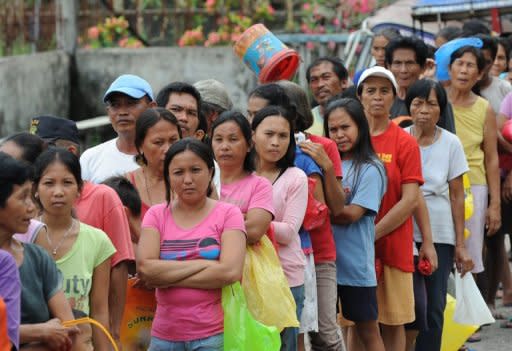Thousands return home after Philippine tsunami

Residents on the Philippines' Pacific coast described how they ran for their lives when a major offshore earthquake triggered a tsunami warning, as thousands returned home on Saturday. Most people had fled the east coast by the time waves of up to half a metre (20 inches) hit coastal areas within an hour of the 7.6-magnitude quake striking offshore late Friday, civil defence chief Benito Ramos said. "They feared they would be swamped by waves as large as those in the (March 2011) Japan tsunami, so it was not difficult to convince them to leave," he told AFP. Police said 132,241 people evacuated overnight, during which the Philippines was rocked by 139 aftershocks, the strongest recorded at a magnitude of 6.4, the state seismology office said. Everyone had since returned home, national police spokesman Chief Superintendent Generoso Cerbo said in a statement. A woman was killed and two other people were injured on the southern island of Mindanao and the eastern island of Leyte, he said. Evacuations were ordered for the east coasts of the two large islands, as well as Samar island, impoverished areas that are pounded annually by many of the up to 20 typhoons and storms that hit the country every year. Samar resident Rosita Abodi took her large extended family of 17 including nephews, nieces and grandchildren back home near the coast of Guiuan, about 140 kilometres (90 miles) from the quake epicentre, before dawn. The 60-year-old woman, who was back at work serving food at her small cafe on Saturday, described the panic that had gripped the area. "It was a full moon and my brother said he saw the water retreat from the shoreline. He was the one who warned us to leave," she said. "When we heard the news we ran because there was no transport available. We slept on cardboard boxes on the floor of a schoolroom. We did not have any blankets or mosquito nets," she told AFP. Abodi said it was the first time in her life that she had been forced to flee her fishing town on the southern tip of Samar because of a tsunami. Roman Catholic parish priest Lope Robredillo said Samar's entire east coast suffered a power outage from the quake, but he did not see any visible damage to buildings and roads. "People here are used to typhoons, but a tsunami is a different proposition because Guiuan is almost entirely surrounded by water," said the 56-year-old. Ramos, the civil defence chief, said the quake damage was "very minimal" with cracks seen on a Samar gymnasium wall and three bridges. However the bridges remained open to light vehicles, he said.

